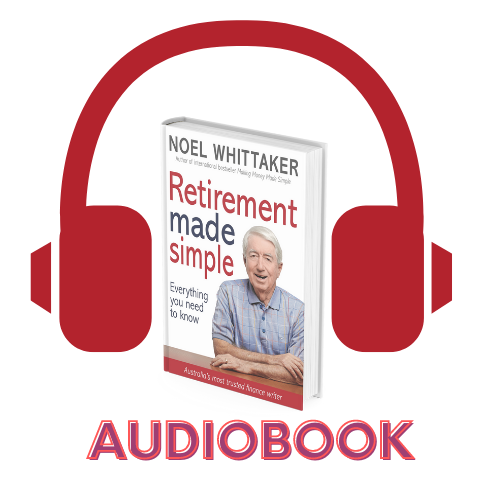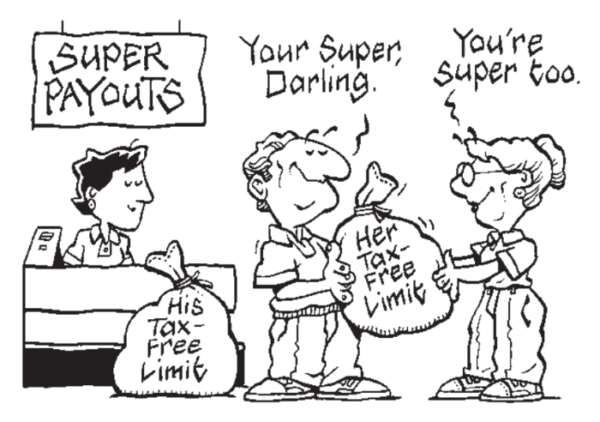Noel News

Education is not the learning of facts,
but the training of the mind to think.
ALBERT EINSTEIN
Welcome to another newsletter.
When I wrote the last one, I had no idea that a war in Ukraine would be taking place by the end of February. These events, and all the scary media that accompanies them, terrify people. Naturally this has been accompanied by massive falls in markets all around the world. As usual, I’m getting a raft of emails from people asking whether they should quit their investments before it’s too late. The other question many are asking is what likely effect the situation in the Ukraine may have on stock markets.
It is normal to feel apprehensive when the market has a downturn, especially when accompanied by the threat of war. I understand that. But I am comforted by the latest research from my long-term friend, Ashley Owen of Stanford Brown Private Wealth. Ashley has analysed 27 military crises since the 1930s (including the German invasion of Poland that led to WW2, Pearl Harbour, the Korean War, Vietnam, the September 11 attacks, and several Russian military invasions and attacks), tracking share market reactions with a particular focus on US and Australian markets.

His conclusion is that sudden military crises inevitably trigger abrupt selloffs in share markets, but almost all recover to above their pre-crisis levels within a few months, including during WW2.
The reason for this consistent rebound is that military activities generally lead to increases in demand, spending, company revenues and profits. They are therefore positive for share markets, especially Australia, since military activity leads to higher commodities prices. The initial share selloffs are an understandable human reaction to the shock of the event, and the associated alarm, stoked by the media reaction. Historically, however, military crises have consistently represented buying opportunities for long term investors.
In times like these, it’s useful to restate some fundamental investment principles:
- The major factor that determines your wealth is the rate of return you can achieve. You will never get a decent return leaving money in the bank, which means you need to move to assets such as local and international shares that historically have given the best returns. Because these assets offer liquidity, they are also volatile, which means it is normal to expect regular and sometimes unexpected market movements.
- You have to stay in the market. It’s tempting to want to cash out and sit on the sidelines waiting for markets to bounce back, but historically the bigger the fall the bigger and faster the bounce-back. Almost invariably, people who try to time the market miss the bounce-back and find themselves stranded.
- Volatility is normal. The Australian share market has averaged 9% per annum (income and growth) over the last 120 years. But that doesn’t mean you earn a steady 9% every year: in some years it may give you 15% to 20%; in other years you may lose 10% or more. That’s the nature of markets. Returns tend to even out over time across the market as a whole.
- The price of a share does not always reflect the value of the company. Some quality companies (like Sonic Health and Suncorp, to mention just two) have recently fallen around 10%, yet their balance sheets are still in good shape and they should remain good long-term businesses. Investors can act in strange ways: they love to buy when the market is booming and shares are fully priced, but shy away when prices fall and the same shares are at sale prices. This means that sometimes you can pick up good shares at a discount.
- Investment is a marathon, not a sprint. To quote Professor Paul Marsh of the London School of Business, “The long-run attractiveness of equities, in my view, is undiminished. You should take a long term view, and the long run is at least 20 years. You should focus on time in the market, not on timing the market.”
It’s impossible to say exactly when the current market turbulence will settle. However, we can be confident that the share market will eventually recover — it always has done. Good quality companies running real businesses and making sustainable earnings and dividends should recover well, as they will once again be sought by investors.
This might be a good time to go to my website www.noelwhittaker.com.au and play with the Stock Market Calculator. It lets you enter a notional sum as well as a notional starting and finishing date and see what your money would be worth if it matched the All Ordinaries Accumulation Index which includes income and growth. The example, if you invested $100,000 in January 2016 it would now be worth $184,000 – a compound gain of 10.7% per annum. If the money had been invested in January 2019 the final value would be $138,000 – a compound gain of 11.33% per annum. You can never judge the performance of share-based investments over the short term – it’s the long-term that counts.
Retirement Made Simple – now on Audible

Now can you plan for retirement while gardening or doing the dishes. Audiobooks are a great way to while away the mundane or routine tasks of life while learning at the same time.
I’m delighted to announce that Retirement Made Simple is now available on Audible. It’s been read by Daniel Moore who has done a fantastic job, and I know you will enjoy it. When access it through Audible you will need to sign up for a monthly commitment, but this can be cancelled without penalty on short notice.
Click here to listen to a sample chapter: https://adbl.co/3KdHr5V
It’s amazing how much more you pick up when it’s read to you. It also gives you the chance to absorb the knowledge while you are travelling, gardening or walking.
Major superannuation changes
Legislation has finally been passed to give effect to several of the key superannuation changes proposed in the 2021 Federal Budget. This is great news for retirees, and people approaching retirement, as they open the door to some worthwhile strategies.

The changes include the removal of the work test requirement for non-concessional contributions for people aged between 67 and 75, and the extension of eligibility for individuals under 75 at the beginning of the financial year to make non–concessional contributions using the bring forward rules. Furthermore, eligibility to make downsizer contributions has been extended to those aged 60 and over. Let’s examine them in detail.
The work test will no longer need to be met by individuals aged between 67 and 75 when making salary sacrificed contributions and personal non-concessional contributions. However, the work test will still need to be met to claim a tax deduction for personal concessional contributions. Apart from the downsizing contribution, no non-concessional contributions may be made once total superannuation balance reaches $1.7 million. Concessional contributions can be made irrespective of the total superannuation balance, and there is a contribution cap of [j1] $27,500 a year – this includes superannuation from all sources including the employer contribution.

There will no tapering of the bring forward rule for those approaching 75. This means that if a person’s age is less than 75 on the prior 1 July and they meet the ordinary eligibility criteria including that which relates to the total superannuation balance, the bring forward rule may be triggered. This could enable a person to put up to an additional $330,000 into their superannuation provided the bring forward rule has not been used in the previous three years. Contributions will need to be received no later than 28 days after the month the person turns 75. However, if a person turns 75 in June, they will not be permitted to trigger the bring forward rule in July the following financial year. In short, the individual must be 74 or under at some time during the financial year to be able to use the bring forward rule.
The ability to withdraw money from superannuation and then re-contribute it as a non-concessional contribution can be a useful tool in reducing the death tax (ie tax paid on death benefit lump sums received by non-dependent adult children), as it could convert a substantial portion of the taxable component to the tax-free component. Furthermore, if there was a substantial imbalance in the superannuation balances of a couple, one partner could withdraw say $330,000 and contribute it to their partner’s superannuation as long as the partner’s super is not in excess of $1.7 million.

The ability to make downsizer contribution at age 60 has significant benefits in certain cases. For starters, it would enable people with high superannuation balances to put another $300,000 each of the super because the $1.7 million limit on non-concessional contributions does not apply to the downsizer contribution.
It would also assist people to maximise the amount they can have in superannuation from the sale of their home. Hypothetically, a couple could make total contributions of $630,000 each from the proceeds of the sale of the property. The first contribution would be $330,000 using the bring forward rules, the second contribution would be the downsizer contribution of $300,000. This is where advice is important, because the terms of sale may have to be tailored to create a situation that maximises the total contributions can be made.
Keep in mind that tax-deductible concessional contributions can be used to reduce capital gains tax in some cases. This would be particularly relevant if the person had less than $500,000 in super at the end of the previous financial year, and had not been making concessional contributions because they had been out of the workforce for several years. Possibly as much as $100,000 could be contributed to superannuation using the catch up concessional contribution strategy. This could eliminate CGT on sale of an asset.

Case study:
John and Daisy both age 66 are retired. They intend to sell an investment property which may result in a taxable capital gain of $400,000. This will reduce to $200,000 after application of the 50% discount, and will be split $100,000 to each party. They have arranged their affairs so that both have less than $500,000 in their individual super accounts. They make catch-up contributions of $100,000 each, four years at $25,000 a year, and then claim a tax deduction of $100,000 each. This eliminates the entire taxable capital gain – the only cost is $15,000 each in contributions tax.
Of course, this begs the question as to what would happen if their superannuation balances were over $500,000 limit. This is aware forward planning is important. Once they reach 60, and of satisfied a condition of release, they can withdraw money from their super, and re-contribute it. So as the years pass, they could be withdrawing money from one account and contributing it to the other person’s super. They could then prior to 30 June, withdraw sufficient amount tax-free, and place the money in the bank. This could lower both balances to $500,000 at June 30, and when the new financial year arrived simply re-contribute $300,000 each in need, using the bring forward rule.
Given that money in superannuation is not assessed by Centrelink until the holder reaches pensionable age, or starts an income from their superannuation, the ability to contribute large chunks of money to superannuation may be highly effective if there was an age difference between the members of a couple. By holding the superannuation in the younger person’s name the older person may qualify for a part pension.
This is just overview of the opportunities available – expert advice should always be taken.
A Tale of Two Credit Cards

As a loyal Virgin flyer my preferred credit cards for years have been the Virgin Velocity ones as they give me valuable Virgin frequent flyer points. However due to my lack of flying for the last two years I find myself with many points but nowhere to go. Now that borders are open, visiting our son James in Los Angeles will become a priority which means we will probably need to fly Qantas. My challenge was to get myself a credit card that was linked to Qantas.
After doing the research I opted for the Citibank Qantas card and filled in their very sparse application form online. There was room for minimal information. I got a response telling me that they needed more information, which I expected, and I responded telling them that I had contacted my accountant to get what they wanted. Next day they advised my application had been rejected. No reason given. I went to their complaints section and filed a complaint about declining an application for a card while the applicant was getting the information requested. It was ignored.
Then it occurred to me that I have an American Express Virgin card now and maybe they could help. It took just one phone call to American Express to get instant approval to replace my Virgin card with the Qantas card. Within 48 hours the card on my Apple wallet had been changed and in four working days later the new card arrived in the mail. What a contrast in service!
Dangers of DIY
There is no question that interest rates are on the way up. But the most realistic estimates are a maximum rise of 1.5% over the next two years, which does little to assist retirees who are unwilling or unable to take advantage of the returns offered by superannuation.
Even with interest rates rising, returns from cash and term deposits will probably remain well below historical levels for several years. The obvious solution for retirees is to seek expert advice to improve their situation. However, the sad reality is that the federal government has effectively neutered the financial advisory system with a range of well-meaning but totally ineffective compliance measures.
The outcome is that advice has become out of reach for all those people who don’t have enough money to justify spending at least $5000 for a consultation – or are not prepared to. The high initial cost covers the time spent researching the client’s resources in depth, and then preparing the paperwork that is now required. The document that must be prepared is called a Statement of Advice, and it normally runs to over 100 pages – it is also unintelligible to most clients.
The high cost of advice has led to many retirees doing their own research on the Internet. While this may be useful in certain specific cases it also leaves them open to bad decisions and – even worse –to becoming the victims of scams.

Just last week I received an email from a bloke telling me that he had sold a property and been searching the web to find ways to invest the money. He was attracted by an investment in Commonwealth bonds, maturing next year, offering 5.5%, and was emailing me for my opinion. My response was, “That sounds too good to be true, but tell me more – if that’s available I wouldn’t mind some for myself”. He sent me the email he had received from a company he had found on the internet, which gave details of the alleged investment.
I checked with a friend, who really knows his bonds. He pointed out that the two bonds in question were old Commonwealth Bonds that were nearing the end of their life, hence maturing next year. Their respective rates were 5.5% and 4.75%, reflecting the high interest states that were current when they were issued.
But even though the maturity value of a bond is fixed, the daily value varies in line with prevailing interest rates. My enquirer would need to pay $108 for a $100 bond paying 5.5% and redeemable next year. The other bond had a coupon rate of 4.75% and was redeemable in 2027. The current price of that was $116 for the $100 bond.
By “investing” in these bonds he would receive the full coupon amounts of $100 on maturity but would be faced with a capital loss of between 8% and 16% because of the premium he would have paid to buy these products. There is no such thing as a free lunch: the market had priced them to yield 1% for the 2023 bond, and around 1.5% for the 2027 Bond.
I pointed out to him that his “safe” investment in government bonds would give him a guaranteed capital loss, and an overall return no better than he was getting at the bank. Given his age and investment goals, superannuation would be a much more effective investment for him, with all the decisions made by experts and not by somebody inexperienced researching the web to see what they could find.
And finally…
Words and their alternative meanings:
Abacus — Swedish swear word
Alaska — Consult my girlfriend
Awestruck — Where a cockney puts his ponies
Barbecue — A long line of dolls
Buoyant — An ant which isn’t a girl
Chairs — Toast by the Queen
Chuckling — A very short throw
Colonnade — A fizzy enema
Delight — Make things go darker
Equip — Online joke
Extractor Fan — Person who used to like farm machinery
Gelatine — Device for beheading jelly babies
Godspeed — It’s raining
Granary — Old folks’ home
Hiding — A bell you can’t reach
Impeccable — Bird proof
Intelligent — A man on TV
Intense — Camping
Khaki — Device for starting car
Knowing — Unable to fly
Laminated — Pregnant sheep

Lassé fair — A sheepdog festival
Maisonette — Tiny freemason
Megahertz — Extremely painful
Metabolics — Unimpressed with metaphysics
Microbe — Tiny dressing gown
Minimal — Small shopping centre
Mirth — A French moth
Motorway — Britain’s leading mote removal company
Negligent — Male lingerie
Nicotine — To arrest a youth
Octagon — A dead octopus
Paintings — Jamaican paracetamol
Parasites — View from the Eiffel Tower
Physiology — The study of effervescence
Plaintiff — Argument with flight attendant
Primark — The first coat of paint applied by Noah
Property — Decent cuppa
Scandal — Footwear to be ashamed of
Snuff Box — Coffin
Stopcock — Chastity belt
Trumped — Talked down to by a xenophobic, mentally challenged, sexist bigot
Tumbling — jewellery for your belly button
Ukraine — Machine for lifting female sheep
Umlaut — Hesitant thug
Warehouse — To forget your address
Xerox — French archaeology

I hope you have enjoyed the latest edition of Noel News.
Thanks for all your kind comments. Please continue to send feedback through; it’s always appreciated and helps us to improve the newsletter.
And don’t forget you’ll get much more regular communications from me if you follow me on twitter
– @NoelWhittaker.
Noel Whittaker







